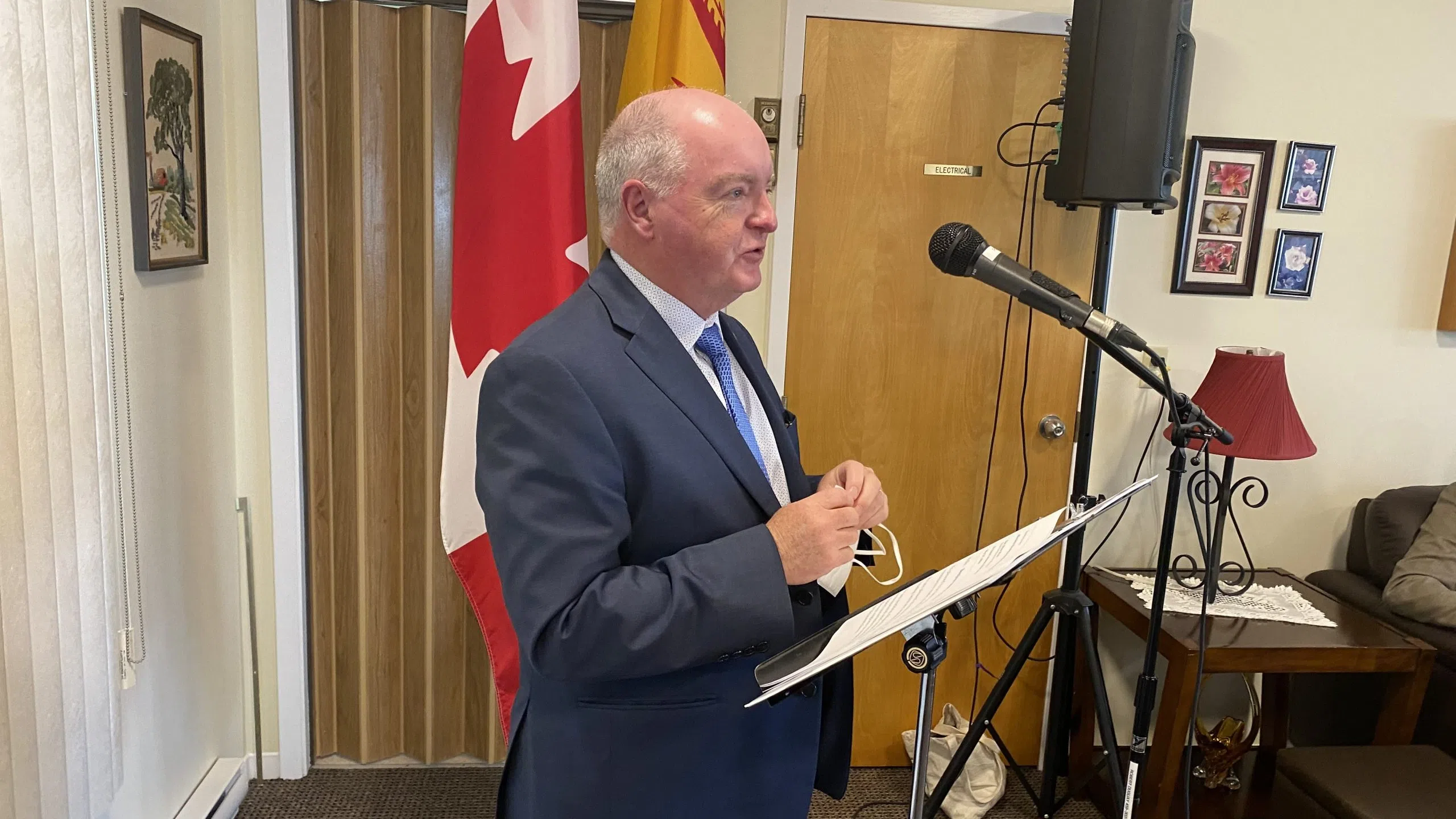Nearly $205,000 in government funding has been announced to help renovate 31 affordable housing units in Saint John.
Social Development Minister Bruce Fitch announced the funding at Sister Sheila Manor in Millidgeville on Friday afternoon.
The money, which is split between the federal and provincial governments, comes from the Canada-New Brunswick Bilateral Agreement on affordable housing.
“An important component is making sure that the units stay updated and stay safe and secure,” Fitch told reporters after Friday’s announcement.
“These are one of the programs that we go forward with is making sure that the renovations occur and the units stay modern and safe and secure.”
Saint John Non Profit Housing will receive $154,944 to renovate 21 affordable housing units spread across five of its buildings in the city’s north end.
The remaining $50,000 will go to Sister Sheila Housing Corporation for its 10 affordable units at Sister Sheila Manor.
Upgrades include a new roof, exterior paint, replacing electrical entrances, and concrete work.
While none of the funding announced Friday will go toward new affordable housing stock, Fitch said his government is “aggressive” in pursuing new units.
The minister reiterated his government’s commitment to build 370 new units across the province over the next three years.
“I’ve pushed the staff to make sure we turn over every opportunity in order to provide those units,” said Fitch.
Hundreds are on the waitlist for one of the roughly 4,200 affordable housing units in Greater Saint John. The province owns about 1,200 of those units, with the rest being operated by for-profit or non-profit groups.
A recent housing needs assessment conducted by the city found there are about 1,200 households on waiting lists to access these units.
The province owns about 1,200 affordable housing units in Greater Saint John, with the rest being operated by for-profit or non-profit groups.
“Saint John isn’t alone in that need and it’s good that they’re doing those types of assessments so we know where we are in relative to what the need is,” said Fitch.
“This is a significant amount of work being done but we realize and we know that there’s always a challenge in meeting the demand.”
Fitch said Social Development continues to work with other government departments to move people along the continuum of housing — from homelessness to temporary emergency shelters through transition housing, assisted living, subsidized housing, market rental housing or market homeownership.




